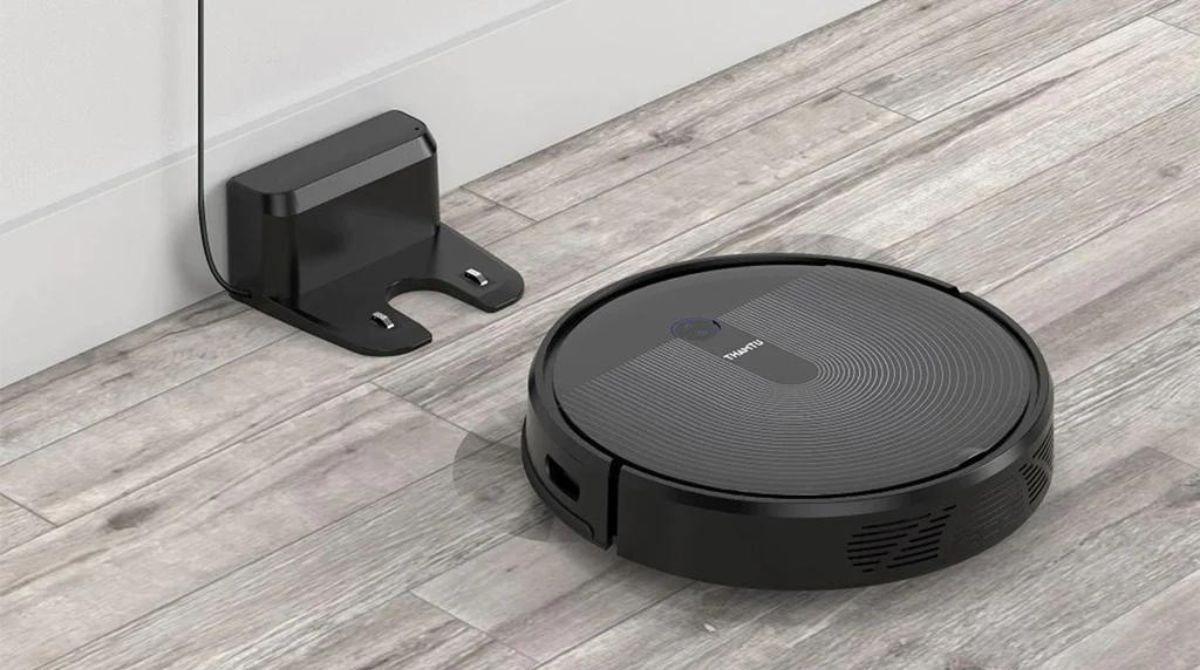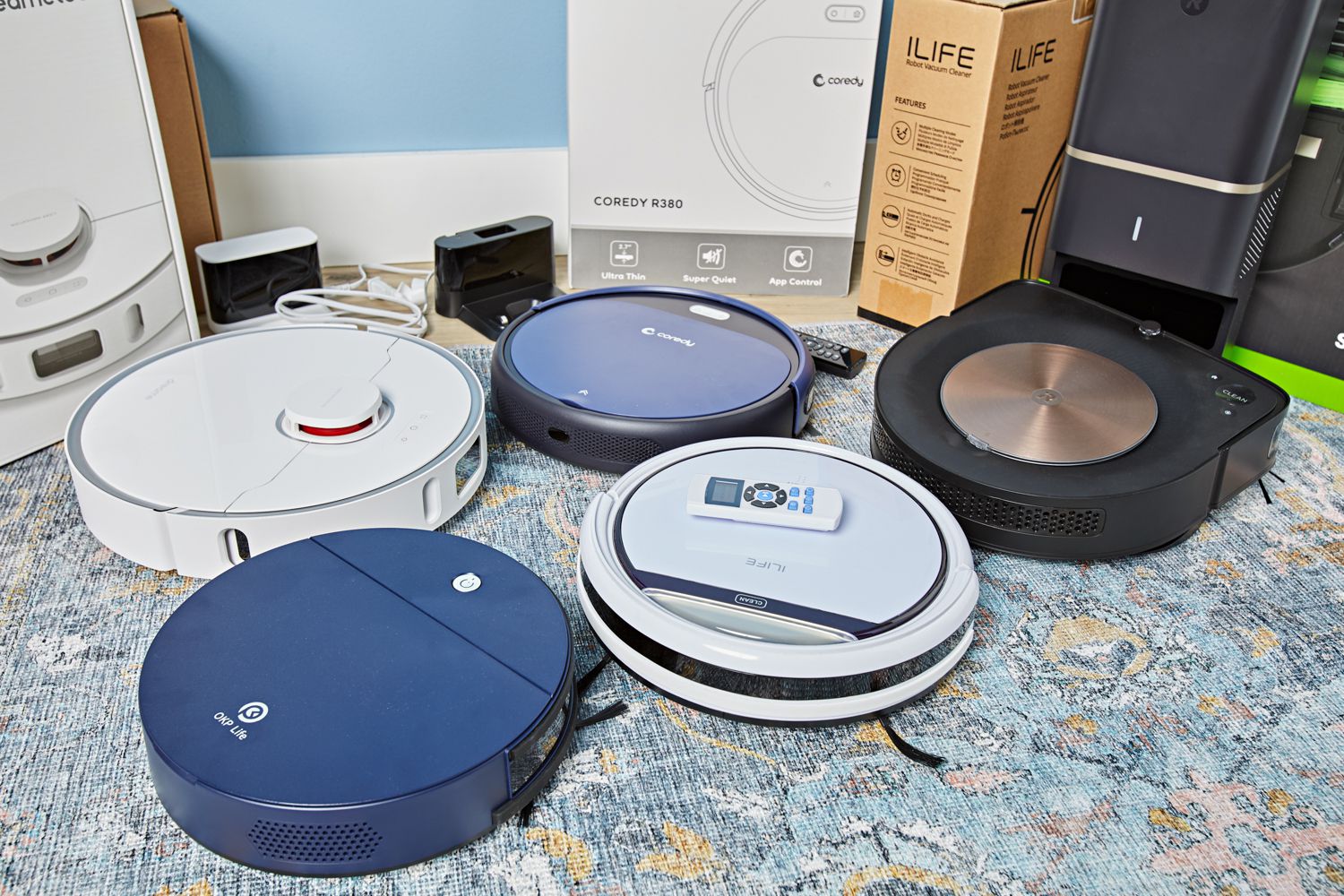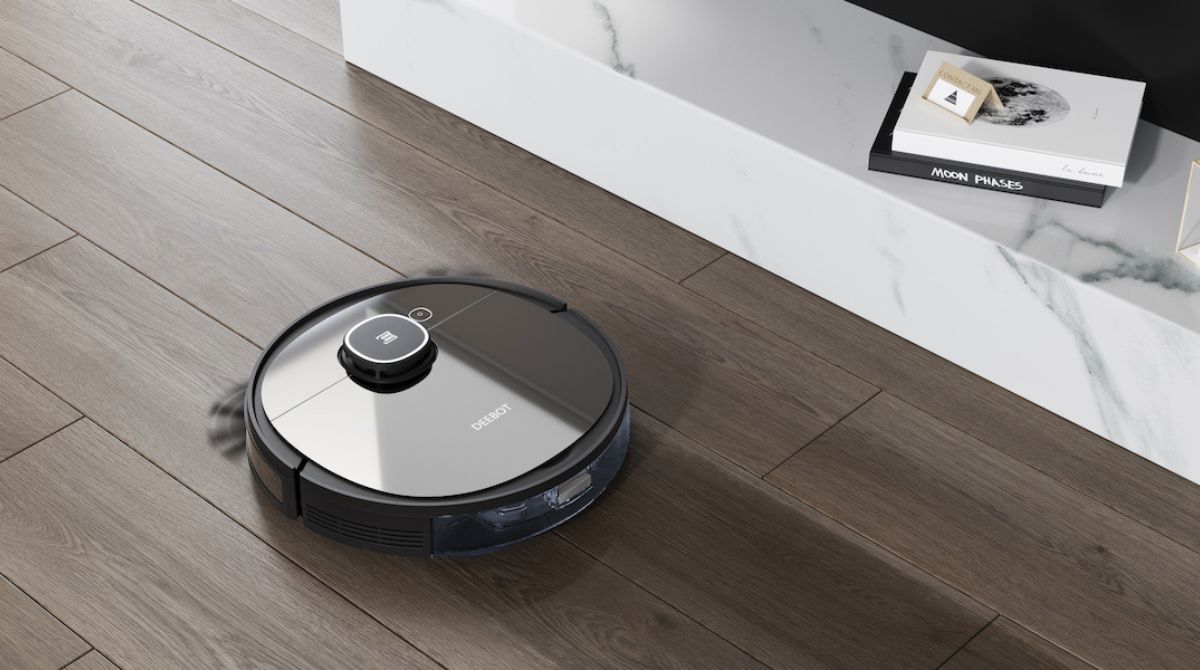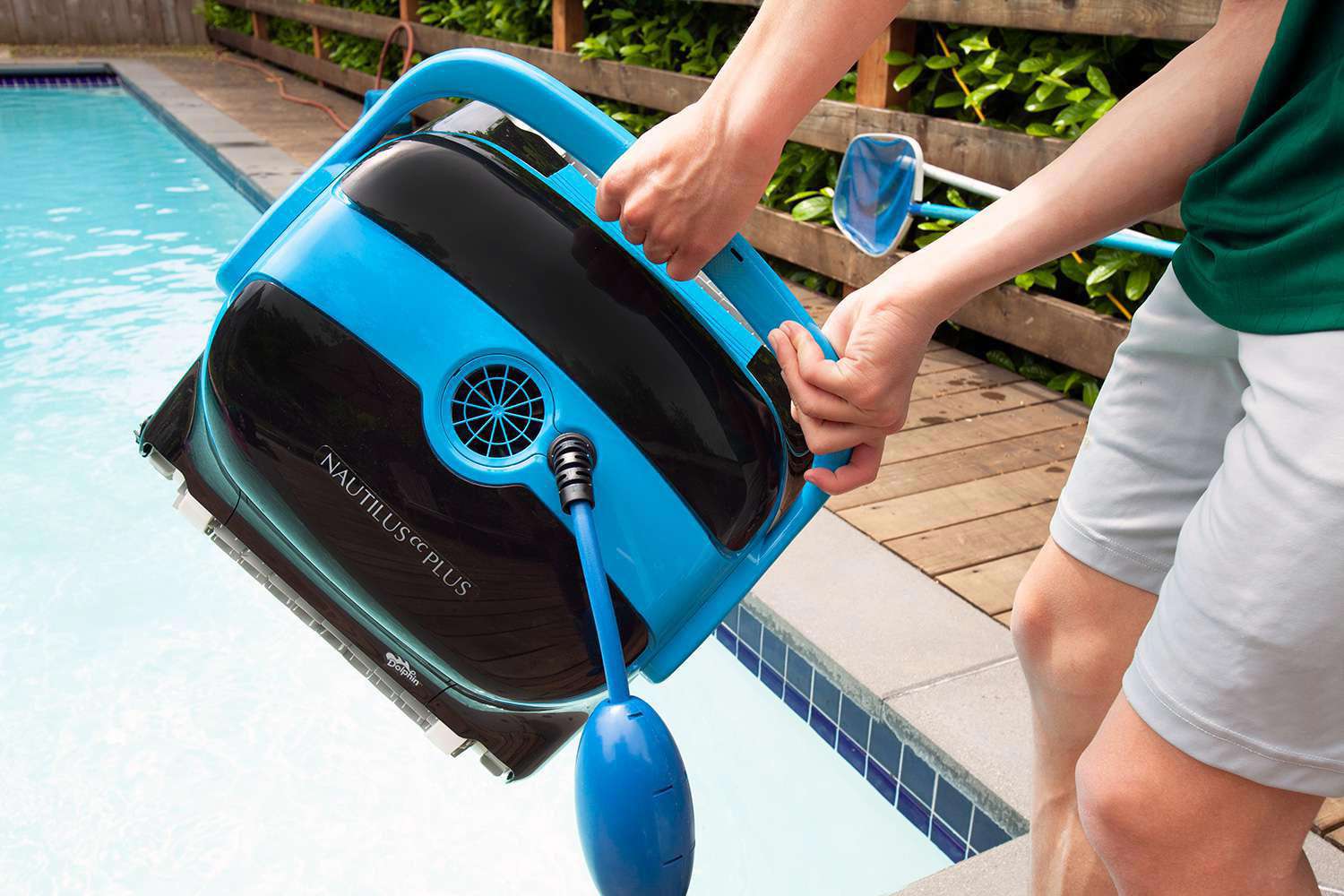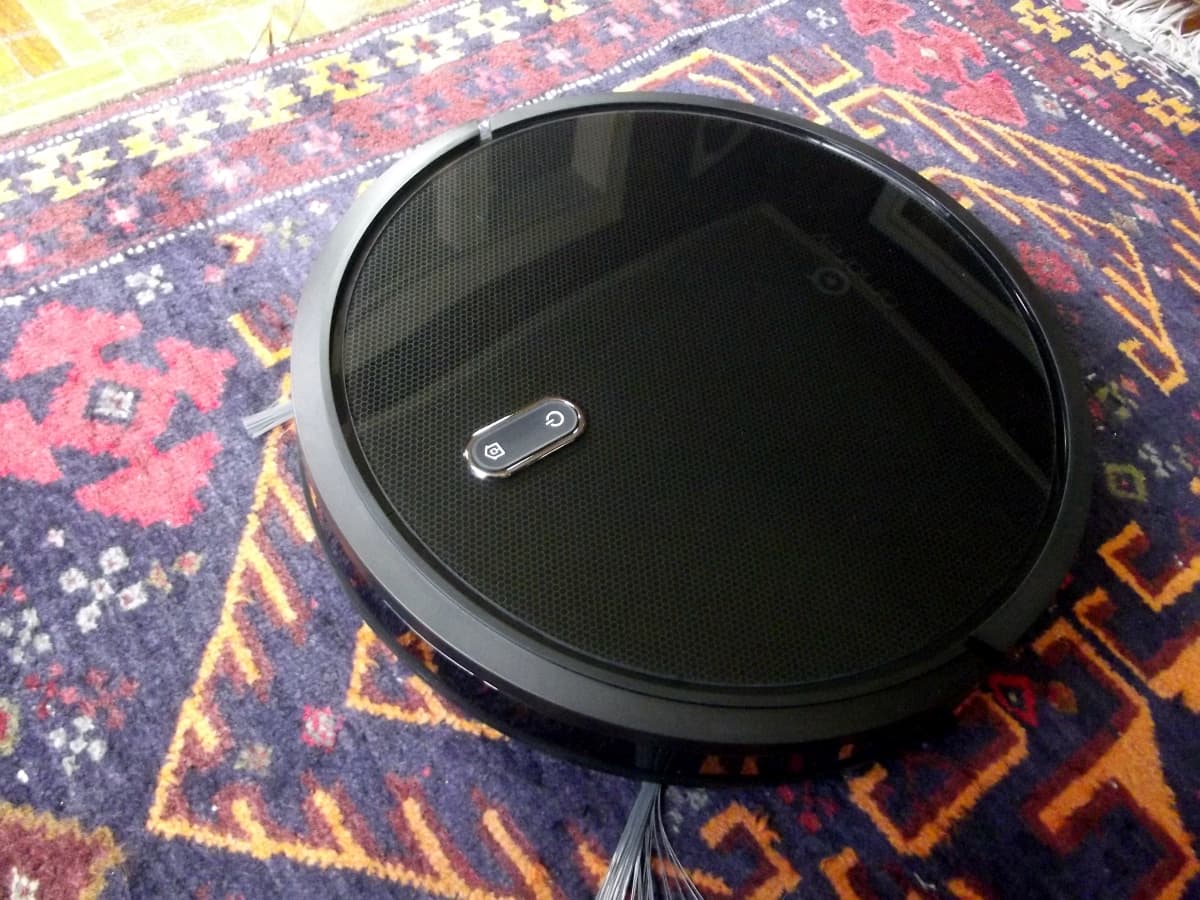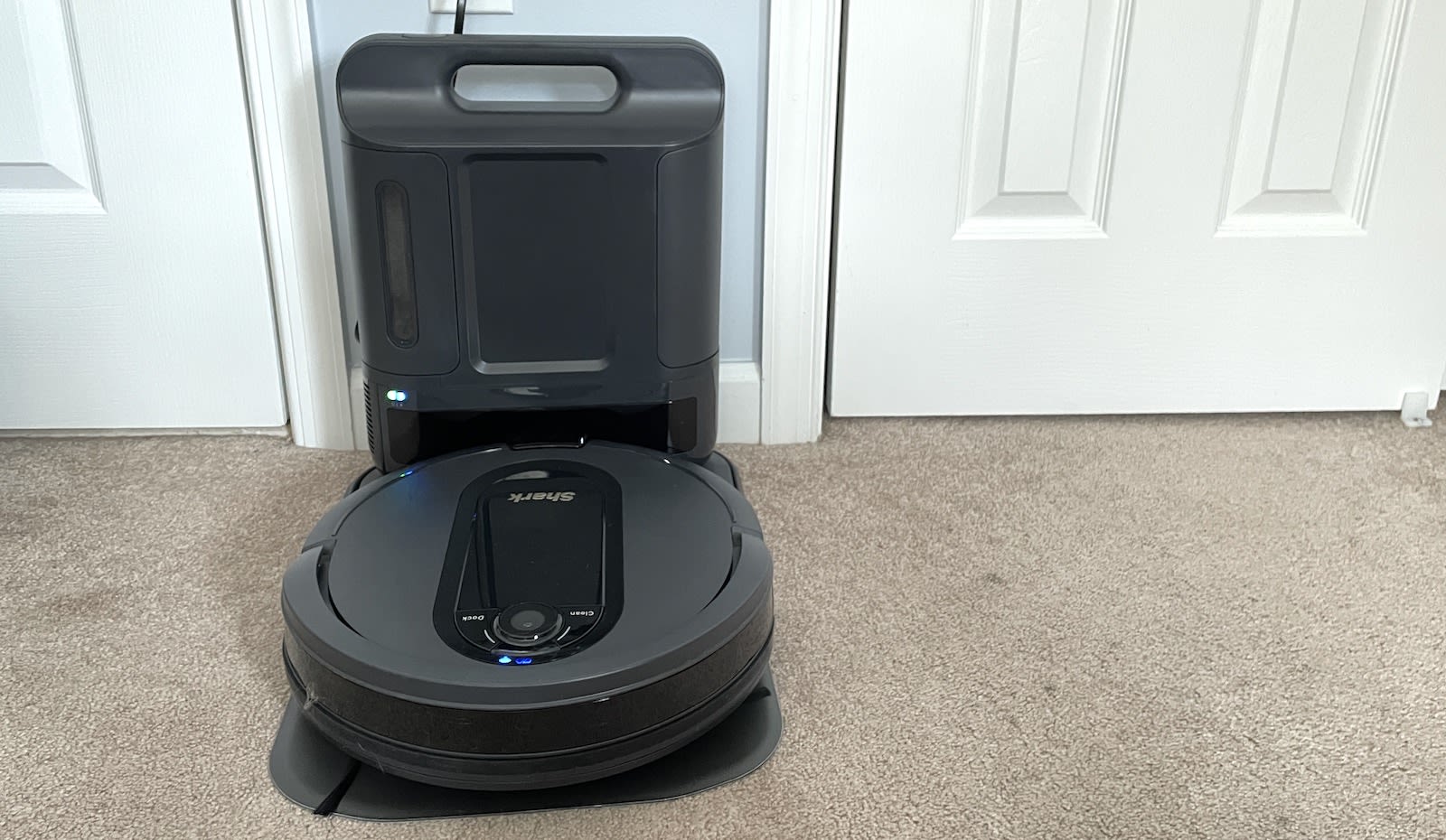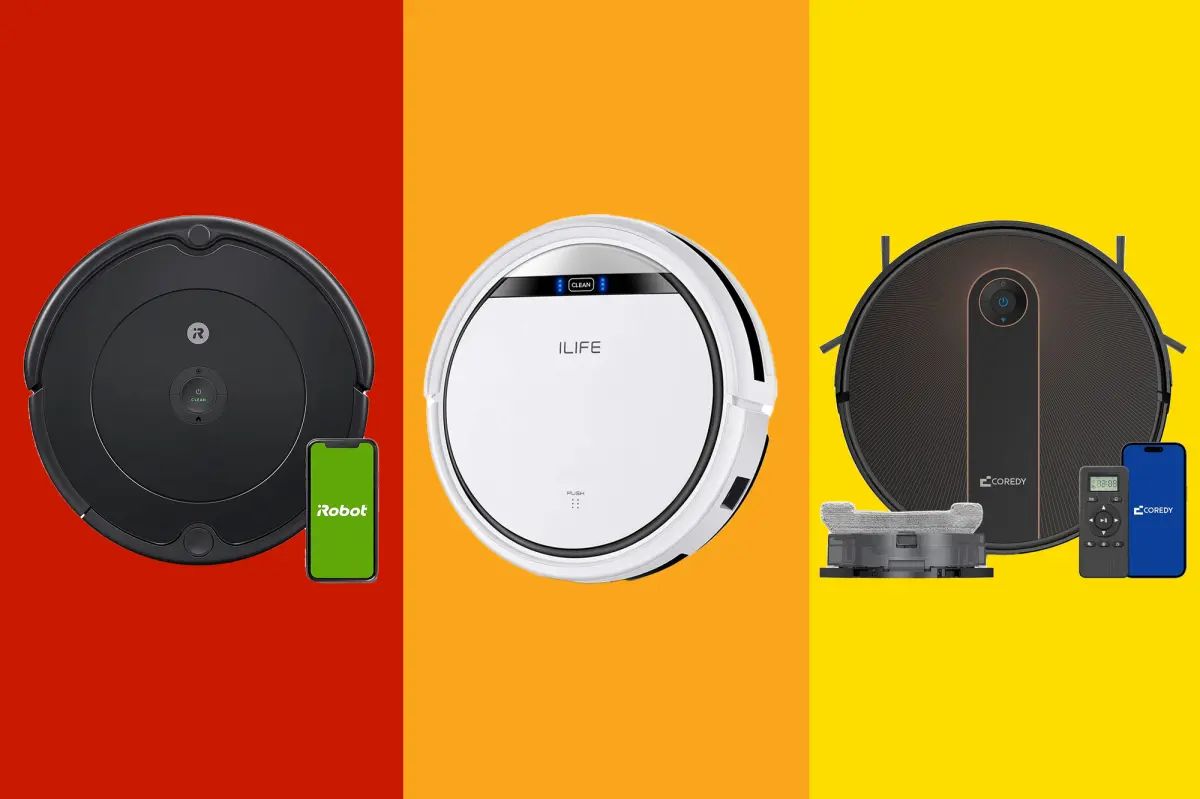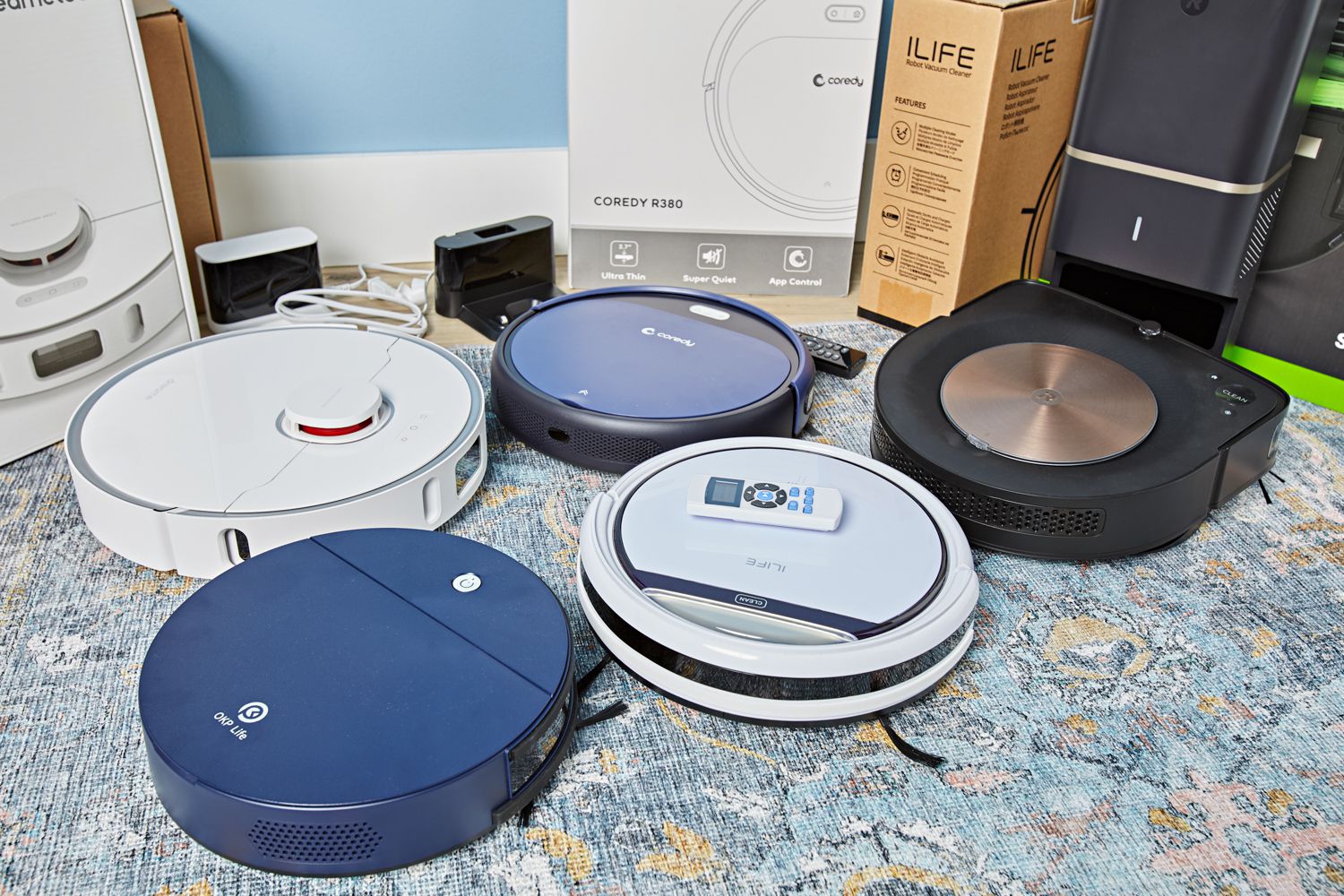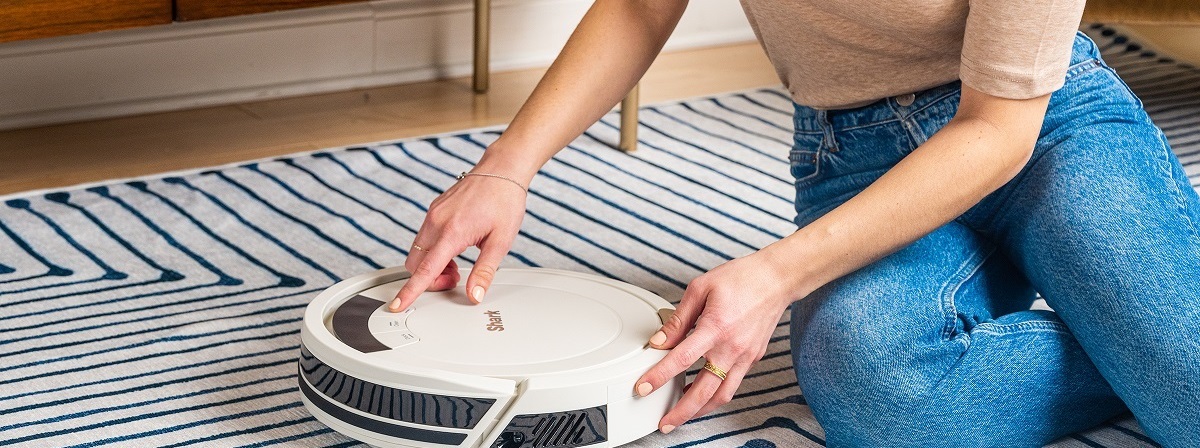Introduction
Welcome to the world of robot vacuums! These nifty devices have revolutionized the way we clean our homes, offering a convenient and time-saving solution to keeping our floors tidy. But how long should a robot vacuum last? This is a question that many homeowners ponder when considering investing in one of these automated cleaning marvels.
The lifespan of a robot vacuum can vary depending on several factors. The quality of the vacuum, the frequency of use, the maintenance and care provided, and the type of surfaces it cleans all play a role in determining how long it will last. Understanding these factors can help you make an informed decision when purchasing a robot vacuum and also ensure that you get the most out of it throughout its lifespan.
In this article, we will explore the various factors that can affect the lifespan of a robot vacuum, provide an overview of the expected lifespan of different brands and models, and share some tips on how to extend the longevity of your robot vacuum. Additionally, we will discuss the signs that indicate your robot vacuum may be nearing the end of its lifespan and when it’s time to consider repairing or replacing it.
So, if you’re curious to know how long your robot vacuum is likely to last or want to learn how to make it last as long as possible, keep reading! Let’s dive in and discover the fascinating world of robot vacuum lifespans.
Factors Affecting the Lifespan of a Robot Vacuum
Several factors can have an impact on the lifespan of a robot vacuum. By understanding these factors, you can optimize the lifespan of your device and make the most out of your investment. Let’s take a closer look at the key factors that influence the longevity of a robot vacuum:
- Quality and Durability: The quality and durability of a robot vacuum play a significant role in how long it will last. Opting for a reputable brand known for producing high-quality vacuums can increase the chances of your device lasting longer. In general, robot vacuums made with sturdier materials and advanced technologies tend to have a longer lifespan.
- Usage Frequency: How often you use your robot vacuum can impact its lifespan. Using it every day for heavy cleaning or in large areas with constant use can put more strain on the device’s components, potentially shortening its lifespan. However, using it in moderation and following the manufacturer’s recommendations for usage can help prolong its durability.
- Maintenance and Cleaning: Regular maintenance and cleaning are crucial for extending the lifespan of your robot vacuum. Cleaning the brushes, filters, and sensors after each use, emptying the dustbin regularly, and ensuring that the device is free from any debris or clogs can prevent damage and improve the overall performance and longevity of your vacuum.
- Type of Surfaces: The type of surfaces your robot vacuum cleans can also influence its lifespan. Robot vacuums designed for specific surfaces, such as carpets or hardwood floors, may wear out faster if used on surfaces they are not intended for. It’s important to choose a robot vacuum that is suitable for the surfaces in your home to ensure optimal performance and longevity.
- Environment and Obstacles: The environment in which your robot vacuum operates can also affect its lifespan. If your home has a lot of obstacles or cluttered areas, the robot vacuum may encounter more collisions or get stuck, leading to potential damage. Creating a robot-friendly environment by removing potential obstacles and ensuring clear pathways can help prevent unnecessary wear and tear.
By taking these factors into consideration, you can maximize the lifespan of your robot vacuum and enjoy its cleaning benefits for years to come. Now that we understand the factors that can impact its longevity, let’s delve into the expected lifespan of different brands and models in the next section.
Expected Lifespan of Different Brands and Models
The expected lifespan of a robot vacuum can vary depending on the brand and model. While it’s challenging to provide an exact lifespan for each specific robot vacuum, we can look at general trends and customer reviews to get an idea of which brands and models tend to have longer lifespans.
High-end robot vacuum brands, such as iRobot Roomba and Neato Robotics, are known for their durability and longevity. These brands typically offer models with robust construction and reliable performance, resulting in a longer lifespan compared to cheaper alternatives. Many customers have reported using their iRobot Roomba or Neato Robotics vacuums for several years without any major issues.
However, it’s important to note that even within the same brand, the lifespan can vary depending on the specific model. Some models may have additional features or technologies that can impact their longevity. It’s always a good idea to read customer reviews and compare the specifications of different models to get a better understanding of their expected lifespan.
On average, a well-maintained and high-quality robot vacuum can last anywhere from 3 to 5 years. However, with proper care, some models have been known to last even longer. Regular maintenance, such as cleaning the brushes and filters, emptying the dustbin, and keeping the sensors free from debris, can significantly extend the lifespan of your robot vacuum.
Ultimately, the expected lifespan of a robot vacuum depends on various factors, as mentioned earlier. Investing in a reputable brand, choosing a model suitable for your specific cleaning needs, and following proper maintenance practices can all contribute to a longer lifespan for your device.
Now that we have explored the expected lifespans of different brands and models, let’s move on to the next section and discover some tips to help extend the longevity of your robot vacuum.
Tips to Extend the Lifespan of Your Robot Vacuum
To ensure that your robot vacuum serves you well for as long as possible, it’s essential to take proactive measures to extend its lifespan. Here are some tips to help you maximize the longevity of your robot vacuum:
- Regular Cleaning and Maintenance: Clean the brushes, filters, and sensors of your robot vacuum regularly, as stated in the manufacturer’s instructions. This will prevent the buildup of dirt and debris that can affect performance and damage the internal components.
- Empty the Dustbin Frequently: Empty the dustbin after each cleaning session or when it reaches its maximum capacity. A full dustbin can strain the robot vacuum’s motor and reduce its efficiency.
- Create a Robot-Friendly Environment: Clear the area of potential hazards and obstacles that the robot vacuum might encounter during its cleaning cycle. This will reduce the risk of collision and damage to the device.
- Use Proper Cleaning Modes: Select the appropriate cleaning mode based on the type of flooring or surface being cleaned. This will prevent unnecessary strain on the robot vacuum and optimize its performance.
- Keep Charging Dock Accessible: Ensure that the charging dock is easily accessible and not obstructed. This will allow the robot vacuum to return to its base for recharging without any difficulties.
- Keep Firmware Up to Date: Check for firmware updates from the manufacturer and keep your robot vacuum’s software up to date. Upgrades can improve performance and address any potential issues.
- Monitor and Address Warning Signs: Pay attention to any warning signs, such as unusual noises, error messages, or a significant drop in cleaning efficiency. Address these issues promptly to prevent further damage and potential breakdown.
- Avoid Overusing: While robot vacuums are designed for convenience, it’s important not to overuse them. Allow the device time to rest between cleaning cycles to prevent overheating and prolong its lifespan.
By following these tips, you can significantly increase the lifespan of your robot vacuum and enjoy its cleaning capabilities for an extended period. Remember that proper care and maintenance are key to keeping your robot vacuum in optimal condition.
Next, let’s explore the signs that indicate your robot vacuum is nearing the end of its lifespan.
Signs that Indicate Your Robot Vacuum is Nearing the End of its Lifespan
While a well-maintained and high-quality robot vacuum can last for several years, there may come a time when it starts showing signs of nearing the end of its lifespan. Being aware of these signs can help you make informed decisions about repairing or replacing your robot vacuum. Here are some indicators that your robot vacuum may be nearing the end of its lifespan:
- Decline in Cleaning Performance: If you notice a significant decline in your robot vacuum’s cleaning performance, such as it leaving behind dirt or missing spots it used to clean, it may be a sign that its components are worn out and not functioning properly.
- Excessive Noise: Unusual noises, such as grinding or screeching sounds, can indicate mechanical issues within your robot vacuum. These noises may be a sign that certain parts are worn out or damaged, affecting its overall performance.
- Frequent Errors or Malfunctions: If your robot vacuum starts displaying frequent error messages or experiencing frequent malfunctions, it may be an indication that its internal systems or sensors are deteriorating and no longer functioning as they should.
- Shortened Battery Life: Over time, the battery life of your robot vacuum may naturally decrease. However, if you notice a sudden and significant reduction in the runtime of your device, it may be a sign that the battery is deteriorating and may need to be replaced.
- Physical Damage: Visible physical damage, such as cracks in the body or broken components, can be a clear indicator that your robot vacuum is nearing the end of its lifespan. These damages can affect its ability to operate efficiently and may require costly repairs to fix.
If you notice any of these signs, it’s important to assess the overall condition of your robot vacuum and consider whether it’s more cost-effective to repair or replace it. While minor issues can sometimes be addressed through repairs, extensive or recurring problems may indicate that it’s time for a new robot vacuum.
It’s worth noting that the expected lifespan of a robot vacuum can vary based on its brand, model, and usage conditions. Some may last longer, while others may wear out sooner. Regular maintenance and care can help prolong the lifespan of your robot vacuum, but it’s essential to evaluate its performance and functionality over time.
Now that we’ve explored the signs indicating your robot vacuum nearing the end of its lifespan, let’s discuss when to consider repairing or replacing your device in the next section.
When to Consider Repairing or Replacing Your Robot Vacuum
When your robot vacuum starts exhibiting signs of wear and tear, it’s important to assess whether it’s more beneficial to repair or replace the device. Here are some factors to consider when making this decision:
- Cost of Repairs: Evaluate the cost of repairing your robot vacuum compared to its current value. If the cost of repairs is close to or exceeds the price of a new model, it may be more cost-effective to replace the device.
- Frequency of Repairs: Take into account how often your robot vacuum requires repairs. If you find yourself frequently dealing with malfunctions or recurring issues, it may be a sign that the device’s overall lifespan is coming to an end, making replacement a more practical choice.
- Age of the Device: Consider the age of your robot vacuum. If it is already nearing the expected lifespan or has surpassed it, it may be more sensible to invest in a new model rather than spending money on repairing an outdated device.
- Technological Advancements: Assess the technological advancements in newer robot vacuum models. If your current device lacks features or functionalities that are important to you, replacing it with a newer model may provide a better cleaning experience.
- Warranty Coverage: Determine if your robot vacuum is still under warranty. If it is, repairing or replacing it may be covered, reducing the financial burden of the decision.
- Personal Priorities: Consider your personal preferences and priorities. If having a reliable and efficient cleaning device is essential to you and repairs can provide that, opting for repairs may be the right choice. However, if you prefer the peace of mind and enhanced features that come with a new model, replacement may be the better option.
Ultimately, the decision to repair or replace your robot vacuum depends on a combination of these factors. It’s important to weigh the pros and cons, considering both the financial aspect and your specific cleaning needs and preferences.
Remember that proper maintenance and care can significantly extend the lifespan of your robot vacuum. By following the maintenance tips discussed earlier and addressing any issues promptly, you can potentially avoid costly repairs or premature replacement.
Now that we’ve explored when to consider repairing or replacing your robot vacuum, let’s conclude our discussion.
Conclusion
Robot vacuums have become an invaluable cleaning tool in many households, offering convenience and efficiency. Understanding the factors that can affect the lifespan of a robot vacuum is crucial for making an informed purchase decision and maximizing its longevity.
We discussed how the quality and durability of the vacuum, usage frequency, maintenance and cleaning practices, type of surfaces cleaned, and the environment all play a role in determining the lifespan of a robot vacuum. Additionally, we explored the expected lifespan of different brands and models, providing insight into which ones tend to have longer lifespans.
To extend the lifespan of your robot vacuum, we shared some essential tips, including regular cleaning and maintenance, creating a robot-friendly environment, using proper cleaning modes, and keeping the charging dock accessible.
We also discussed the signs that indicate your robot vacuum may be nearing the end of its lifespan, such as a decline in cleaning performance, excessive noise, frequent errors or malfunctions, shortened battery life, and physical damage. Knowing these signs can help you make an informed decision on whether to repair or replace your device.
Ultimately, the decision to repair or replace your robot vacuum depends on factors such as the cost of repairs, the frequency of issues, the age of the device, technological advancements, warranty coverage, and personal preferences.
By following these guidelines and taking proper care of your robot vacuum, you can prolong its lifespan and enjoy the cleaning benefits it provides for years to come.
So, whether you’re a new robot vacuum owner or considering investing in one, use these insights to make informed decisions and get the most out of your cleaning companion!







